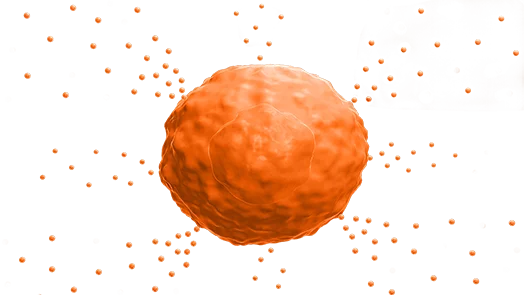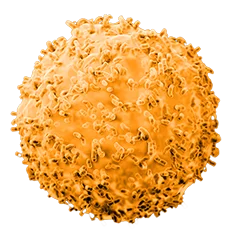IgE in Food Allergy
Food allergy is a significant and growing health problem in the United States, Europe and throughout the developed world. It is estimated that over 17 million people in the United States have been diagnosed with a food allergy, including approximately six million children. Approximately 40% of people with a food allergy are allergic to more than one food and approximately half of food-allergic people in the United States have had a severe reaction from their food allergy.
Food allergy occurs when the immune system responds to a harmless food as if it were a threat. In a non-allergic patient, tolerance for food proteins develops early in life and the immune cells do not mount a response when food proteins are detected. In an allergic patient, the immune system is sensitized to one or more food proteins, or allergens (“sensitization” phase). As a result of this sensitization, the patient’s immune system produces IgE antibodies, which are directed against that particular allergen. The IgE antibodies bind to mast cells and basophils via its receptor called FceR1. When an IgE antibody bound to these immune cells encounters the allergen it is directed against the mast cells and basophils are activated and release histamine and other inflammatory mediators which then provoke the symptoms of an allergic reaction (“effector” phase). Symptoms may include hives, swelling, vomiting, abdominal pain, wheezing, breathlessness and lowered blood pressure. Allergic reactions can be triggered by exposure to minute quantities of the relevant food allergen and can be painful, frightening and potentially deadly. In some cases severe reactions known as anaphylaxis can occur which can lead to death. Such reactions require urgent medical attention and often result in treatment at hospital emergency departments.
IgE in Chronic Spontaneous Urticaria (CSU)
Chronic Spontaneous Urticaria (CSU) is a serious skin condition defined by the appearance of itchy red welts, known as hives, and often deeper tissue swelling (angioedema) that persists for at least six weeks and frequently much longer, without any identifiable external trigger. CSU affects roughly 0.5%–1% of the population, striking most commonly between ages 20 and 40, with women impacted twice as often as men.1 For patients, the unpredictable, persistent nature of CSU can be devastating; hives and swelling may appear anywhere on the body, often interfering with sleep, social relationships, and daily activities, while the itching and discomfort can lead to exhaustion, pain, and anxiety.2 The burden extends beyond physical discomfort—many patients experience depression, impaired work productivity, and significant social withdrawal. More than 20% of patients miss at least an hour of work each week.
CSU is driven by complex immune system dysregulation.3 The condition involves immune cells such as mast cells and basophils, which abnormally release histamine and other inflammatory mediators into the skin without external provocation, leading to the characteristic hives and swelling. Similar to the mechanism in food allergies, IgE antibodies directed against the mast cells and basophils are activated and release histamine and other inflammatory mediators which then provoke the symptoms of an allergic reaction. This immune activation results in chronic inflammation and symptom persistence.
Despite the availability of antihistamines, many patients remain inadequately controlled, cycling through medication regimens with only partial or temporary relief. This persistent gap between therapeutic goals and outcomes highlights an unmet medical need: more effective, lasting, and accessible treatments are needed that target the underlying immune mechanisms of CSU and restore well-being.



